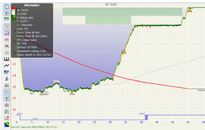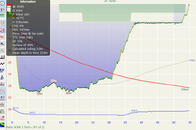Since I had a few occasions my computer died during liveaboard vacation (tank dropped on one, battery checked ok before trip not ok after third day and one computer went down the abyss during transition from dingy to boat) I nowadays take two computers, just in case Neptune claims another computer from me.
Being the geek that I am, I used to check both because they were there on my wrist and I was puzzled by the discrepancies (even when using the "same" algorithm). I now believe it is a combination of slight differences in sensor readings and sampling rates.
My solution to this: put the backup computer under the wetsuit's sleeve. During dive only use main computer. IF main computer dies, gets lost or whatever: pull backup computer from under sleeve and it becomes the new primary. Problem solved.
My first daughter had high fever when she was a few months old. My wife had about a dozen thermometers stashed in different locations, just for cases like this. Some were the same model and manufacturer, others not. So, first thermometer showed 41C, second showed 42C, some read 39.9C and one 43C. Off we went to ER, where they check temperature with only ONE thermometer, which showed 40C. High, but not something to run to the hospital. But we spent the weekend "for supervision" and my daughter was all right (She's 26 now). Back home I was annoyed by the temperature differences and accuracy between various thermometers, so I took them to my lab and compared vs. a set of thermocouples and a calibrated thermometer. And not surprisingly, the variance between the home thermometers was about +/-1.5C. I apologized to my wife and threw away all thermometers but one. Life became simpler with one thermometer only.
Most dive computers manufacturers write nothing about the specs of depth sensor, temperature sensor, AI transmitter, sampling rate and so on, but all these sensors have a certain accuracy, and even using same sensors you can have a difference in their readings.





